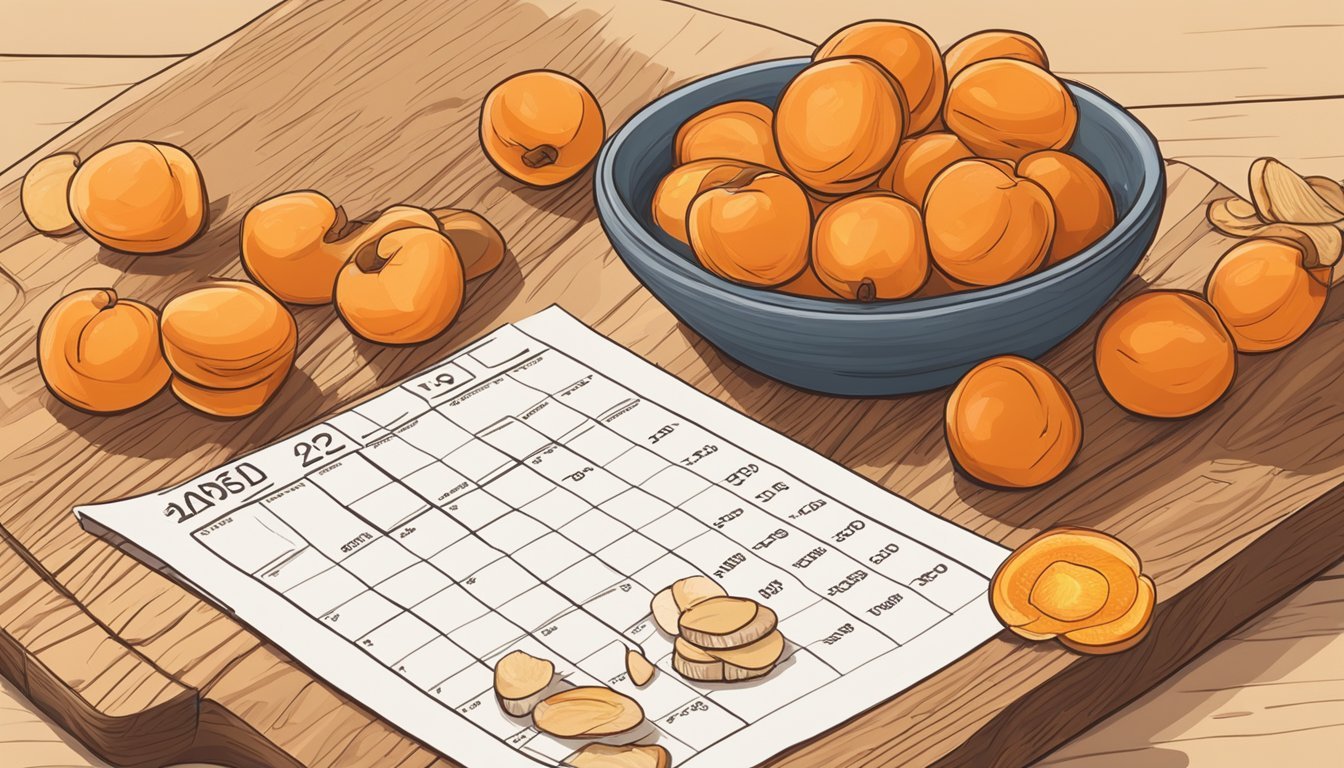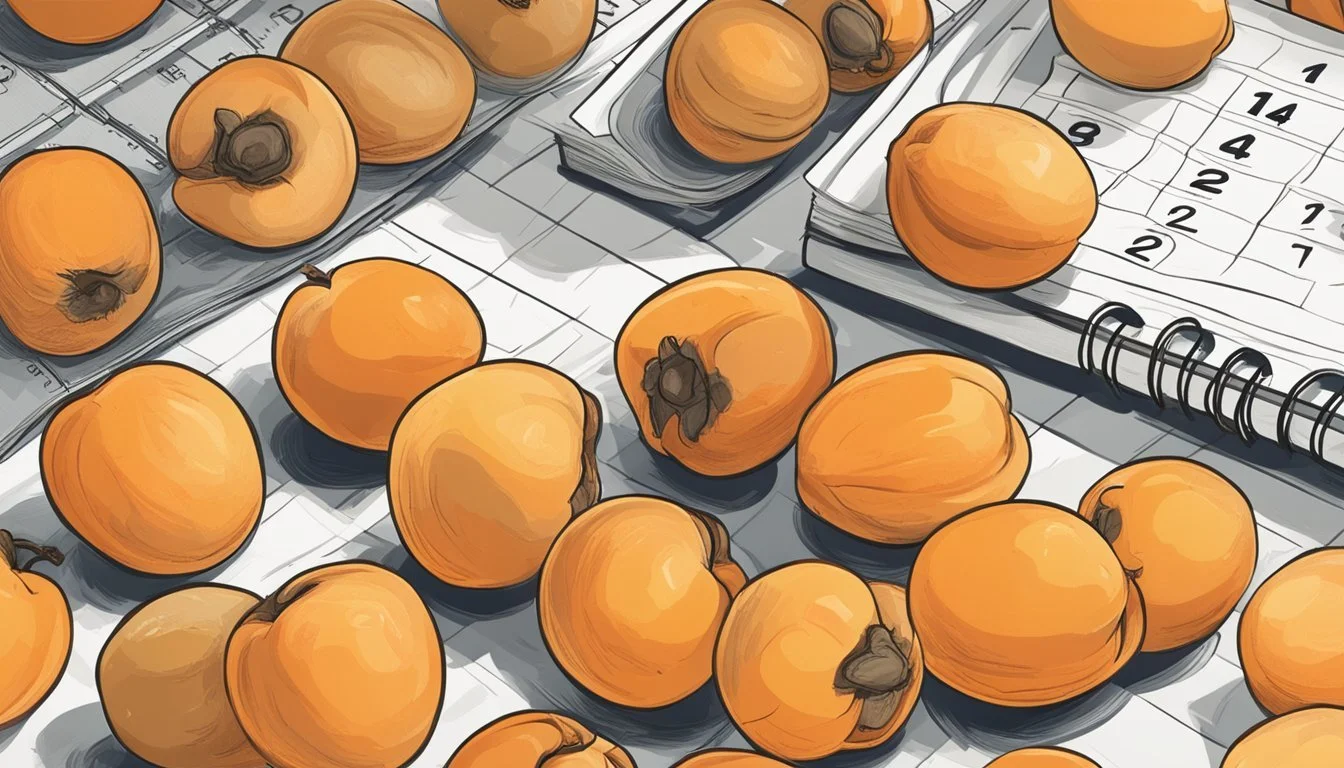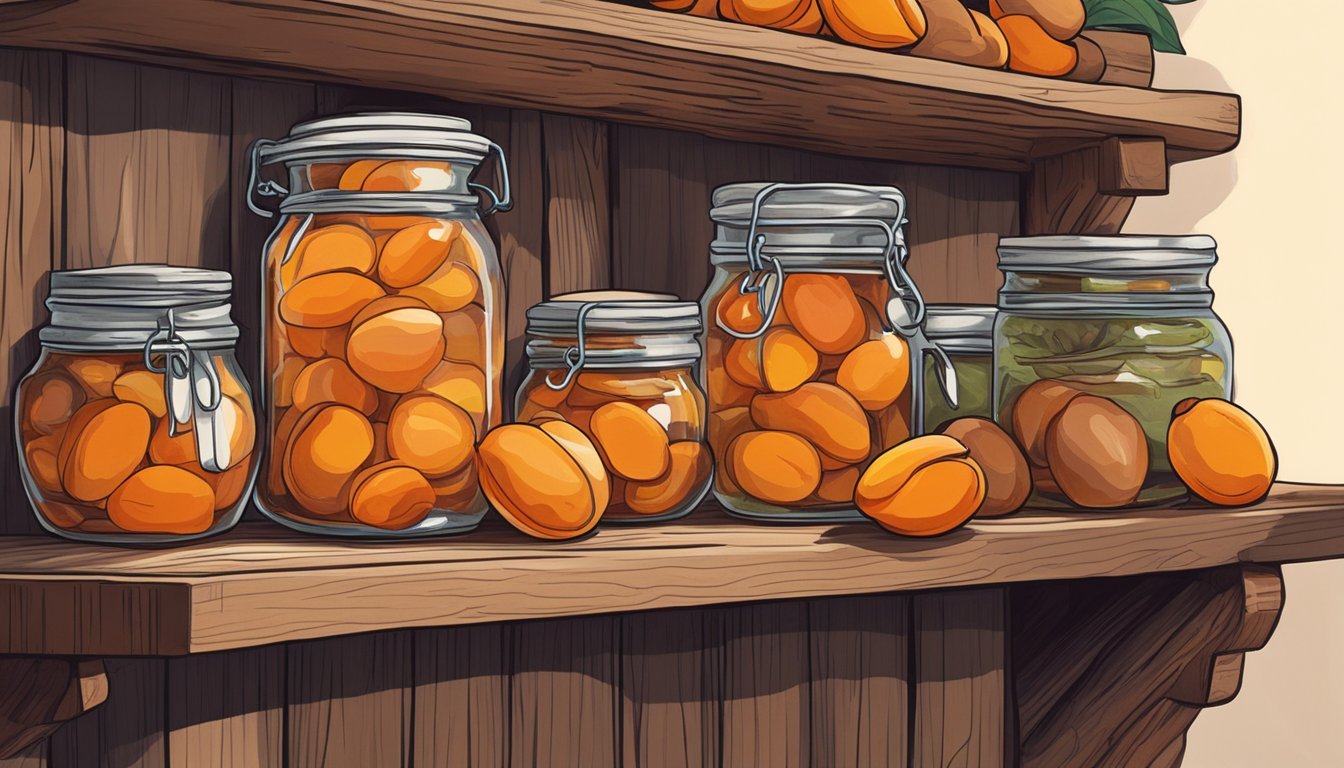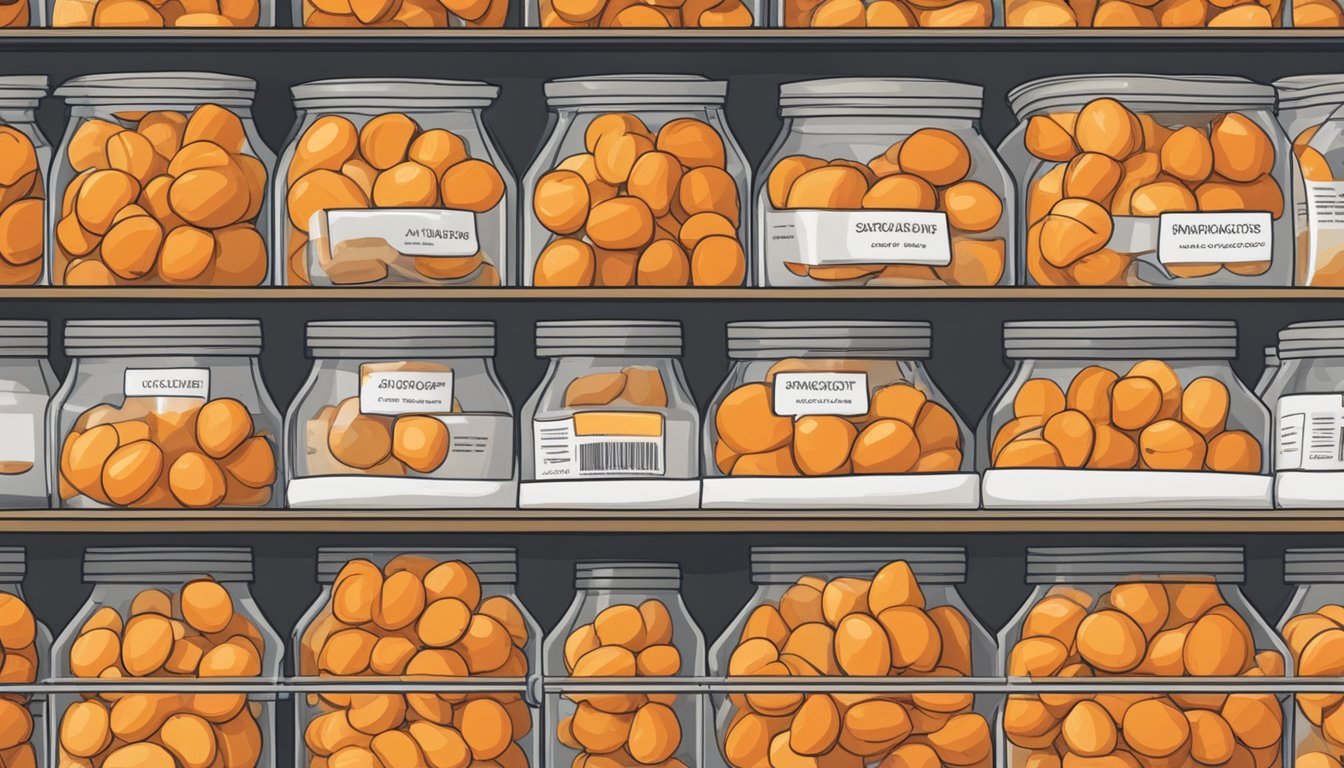How Long Do Dried Apricots Last?
Shelf Life and Storage Tips
Dried apricots (how long do dried apricots last?) are a popular snack, valued not only for their sweet, tart flavor but also for their extended shelf life compared to fresh fruit. Properly stored, dried apricots can retain their quality for a significant period. They generally remain safe for consumption for six months in the pantry and can last even longer when refrigerated, extending their shelf life up to a year. It's important to note that the nutritional value of dried apricots, which includes dietary fiber, vitamins, and minerals, is well preserved over this time.
The key to maximizing the shelf life and maintaining the quality of dried apricots lies in storage conditions. They should be kept in a cool, dry place away from direct sunlight to prevent deterioration. Once the package is opened, sealing them in an airtight container or resealing the original packaging if possible can help maintain freshness. Refrigeration is especially recommended in hot, humid environments to prevent the apricots from becoming moldy or losing their desired texture and flavor.
Understanding Dried Apricots
Dried apricots are a convenient and nutritious snack, rich in vitamins and minerals with a long shelf life due to their dehydrated state. They offer a dense source of energy and nutrients.
Nutritional Profile
Dried apricots boast a substantial nutritional value. They are a good source of dietary fiber, which aids in digestion. Here's a quick overview of their nutritional content:
Vitamins: High in vitamin A and vitamin E, which are essential for immune function and skin health.
Minerals: Contains potassium, iron, and calcium.
Sugar: While they do have natural sugars, they provide a healthier alternative to sugary snacks.
Antioxidants: Rich in antioxidants like beta-carotene and flavonoids that protect the body from oxidative stress.
Drying Process
The process of drying apricots involves removing water content, which concentrates the fruit's natural sugars and extends its shelf life. This dehydration can be achieved through various methods:
Sun drying: Apricots are laid out in the sun, often on trays, and left to dehydrate naturally. This traditional method is still widely used.
Commercial drying: Uses specialized dehydrators or ovens which provide a controlled environment for consistent results.
Throughout the drying process, care is taken to ensure that the apricots retain their nutritional properties while minimizing the risk of spoilage. Due to the reduced moisture content, dried apricots are less susceptible to microbial growth, making them a durable, shelf-stable food item.
Shelf Life and Storage Conditions
Dried apricots have a shelf life that can significantly vary depending on storage conditions, such as temperature and moisture control. Properly stored, they can retain quality over an extended period.
Factors Affecting Shelf Life
The shelf life of dried apricots is influenced by several factors, principally temperature and exposure to air. Dried apricots can typically last from 6 to 12 months at room temperature. However, when stored in the fridge, their shelf life can extend to up to a year, and in the freezer, they may last 12 to 18 months.
Temperature: To maintain quality, it's crucial to keep dried apricots at a stable storage temperature, ideally between 50-70°F (10-21°C).
Airtight Container: An airtight container is essential to protect them from oxygen and pests.
Oxygen Absorber: An oxygen absorber packet can further extend their shelf life by preventing oxidation.
Optimal Storage Conditions
For optimal storage conditions, dried apricots should be kept in a cool, dry place away from direct heat or sunlight. An airtight container or heavy-duty plastic bag is ideal to ensure they are stored properly.
Storage Temperature: Keep dried apricots at lower temperatures (pantry, fridge, or freezer) to prolong shelf life.
Pantry: Around 6 to 12 months in a cool, dry place.
Fridge: Up to 1 year when refrigerated appropriately.
Freezer: Extends shelf life to 12-18 months if frozen.
Humidity and Moisture Impact
Humidity and moisture content in the storage environment can lead to spoilage or mold growth in dried apricots. It is essential that they are kept dry.
Moisture: Ensure the storage area is not damp, and consider using desiccants if necessary.
Airtight Sealing: An airtight seal keeps moisture out and preserves the apricots' quality.
Periodic Checks: Regularly check the dried apricots for any signs of spoilage and consume them before they lose their quality.
Signs of Spoilage
When assessing whether dried apricots have spoiled, it's important to consider visual and textural indicators, aroma, taste, and potential health risks associated with spoilage.
Visual and Textural Changes
Dried apricots should retain a uniform color consistent with their natural dried state. Signs of spoilage include noticeable discoloration or blackening. The texture also indicates freshness; they should not become excessively hard or lose their pliability. These changes suggest that the dried apricots have spoiled.
Aroma and Taste Evaluation
A key indicator of spoilage is change in smell and flavor. Fresh dried apricots have a sweet, slightly tangy aroma and taste. If there is a loss of flavor or an emergence of an off or rotten smell, this indicates that the dried apricots are no longer good to consume.
Contamination and Health Risks
While less common than with fresh fruit, mold growth can still occur, especially if the dried apricots have been exposed to moisture. Consuming moldy dried apricots poses health risks, including allergic reactions and respiratory problems. If you observe any signs of mold or unusual growths, the dried apricots should be discarded to avoid the consumption of potentially harmful microbes.
Proper Storage Techniques
The longevity of dried apricots relies heavily on the chosen storage method. Maintaining freshness and extending shelf life can be achieved through airtight containers, correct refrigeration practices, and, if necessary, freezing.
Airtight Containers
For dried apricots, airtight containers are crucial in preventing moisture and air exposure, which can lead to spoilage. Glass jars with secure lids or heavy-duty plastic bags specifically designed for food storage offer effective solutions. Ensure the apricots are completely dry before sealing them in the container to avoid mold growth.
Refrigeration vs. Pantry
The decision to refrigerate or keep dried apricots in the pantry depends on the desired shelf life. While a cool, dry pantry is suitable for short-term storage, extending up to 6 months, the refrigerator can preserve the apricots for as long as a year. However, it is vital to keep them away from strong-smelling foods to prevent odor absorption.
Freezing Dried Apricots
For long-term preservation, dried apricots can be stored in the freezer. Use a vacuum sealer or plastic freezer bags to protect against freezer burn and further extend their shelf life. When freezing, label the container with the date to help keep track of how long they have been stored.
Extending the Shelf Life
To ensure that dried apricots remain edible beyond their typical expiration date, one can adopt measures in packaging and temperature control. These methods help to extend shelf life significantly, keeping the apricots in a suitable condition for consumption.
Packaging Innovations
Vacuum sealing is a notable innovation in packaging that can extend the shelf life of dried apricots. By removing air from the package, it reduces the oxygen levels, thereby minimizing oxidation and the growth of mold. Dried apricots should be placed in airtight containers or heavy-duty plastic bags to shield them from moisture and other contaminants. A cool and dry place, away from direct sunlight and heat, provides an ideal storage environment.
Vacuum seal dried apricots.
Use airtight containers or bags.
Store in a cool, dry location.
Freezing and Thawing Tips
Dried apricots can be frozen to prolong their quality. Prior to freezing, one should ensure the apricots are well-packaged in freezer-safe, airtight containers to prevent freezer burn. When thawing, it is crucial to do so in the refrigerator or at room temperature to maintain their texture and taste. Dried apricots should not be refrozen repeatedly as this can compromise their quality.
Freeze in airtight containers specifically designed for freezer storage.
Thaw in the refrigerator or at room temperature.
Avoid repeated freeze-thaw cycles.
Usage and Recipes
Dried apricots offer versatility in cooking and baking, lending their sweet-tart flavor to both savory meals and sweet treats. They can be used straight from the package or rehydrated to bring a vibrant taste to various dishes.
Incorporating into Meals
In savory meals, dried apricots can be chopped and added to grain salads, pilafs, or couscous (What wine goes well with couscous?) dishes for a burst of sweetness. They pair well with proteins such as chicken, lamb, or pork, and can be included in marinades, glazes, or as part of a stuffing. During cooking, the dried apricots soften and infuse the meal with their distinct tang.
Example Savory Recipe:
Apricot Chicken Tagine:
Incorporate sliced dried apricots into a simmering pot of chicken tagine to absorb the spices and add complexity to the dish.
Desserts and Snacks
Their chewy texture makes dried apricots ideal for baking into cookies, bars, or bread. They can be diced and added to batter, or pureed and used as a filling. Dried apricots also serve as a healthy snack on their own or can be mixed into trail mixes, yogurt, or oatmeal.
Example Sweet Recipes:
Apricot Oatmeal Cookies:
Fold in chopped dried apricots into the oatmeal cookie dough before baking for a fruity twist.
Apricot Energy Balls:
Blend dried apricots with nuts (how long do nuts last?) and seeds to form energy balls for a nutritious, on-the-go snack.
This section provides specific ways dried apricots can be incorporated into cooking and baking, highlighting their ability to complement both sweet and savory flavors. The recipes given here utilize dried apricots to enhance traditional dishes and create new favorite snacks.
Selecting and Buying Tips
When purchasing dried apricots, one's awareness of quality indicators and packaging information ensures a quality product that retains its flavor and longevity. Discerning buyers focus on the appearance and feel of the product, as well as comprehend packaging labels that clarify the expected shelf life and quality.
Evaluating Quality at Purchase
Key elements to note when assessing the quality of dried apricots at the time of purchase include:
Appearance: Good quality dried apricots typically exhibit a rich orange color. A very dark or light hue can suggest over or under-ripeness. Buyers should look for apricots that are plump and uniformly sized without any signs of crystallized sugar on the surface.
Flavor: It's ideal to purchase from sources that offer samples, as the taste should be sweet with a slight tanginess, indicative of the best quality dried apricots.
Understanding Labels and Dates
Consumers should pay attention to the following details on packaging:
Best Before Dates: This indicates the time frame in which the dried apricots should retain peak quality. It is not an expiration date but a guideline for freshness.
Storage Instructions: Labels often provide storage recommendations. Adhering to these can prolong the shelf life, ensuring the apricots maintain their flavor and quality.
Safety Considerations
When storing dried apricots, maintaining food safety is paramount. It involves preventing contamination and managing pests to extend shelf life and prevent spoiling.
Preventing Contamination
To minimize the risk of contamination, one should always handle dried apricots with clean hands and use clean utensils. Containers for storage should be sanitized and dried thoroughly to ensure no moisture can encourage mold growth. Storage should be done in a cool, dry place, and apricots should be kept in airtight containers to protect them from environmental contaminants.
Managing Pests
Pests pose a significant threat to the quality and safety of dried apricots. To deter pests, one should store the apricots in sealed containers that are impervious to insects. Regular inspection of stored apricots for signs of pest infestation, such as holes or droppings, is crucial. If pests are detected, the affected apricots should be discarded immediately to prevent the spread to other food items.








